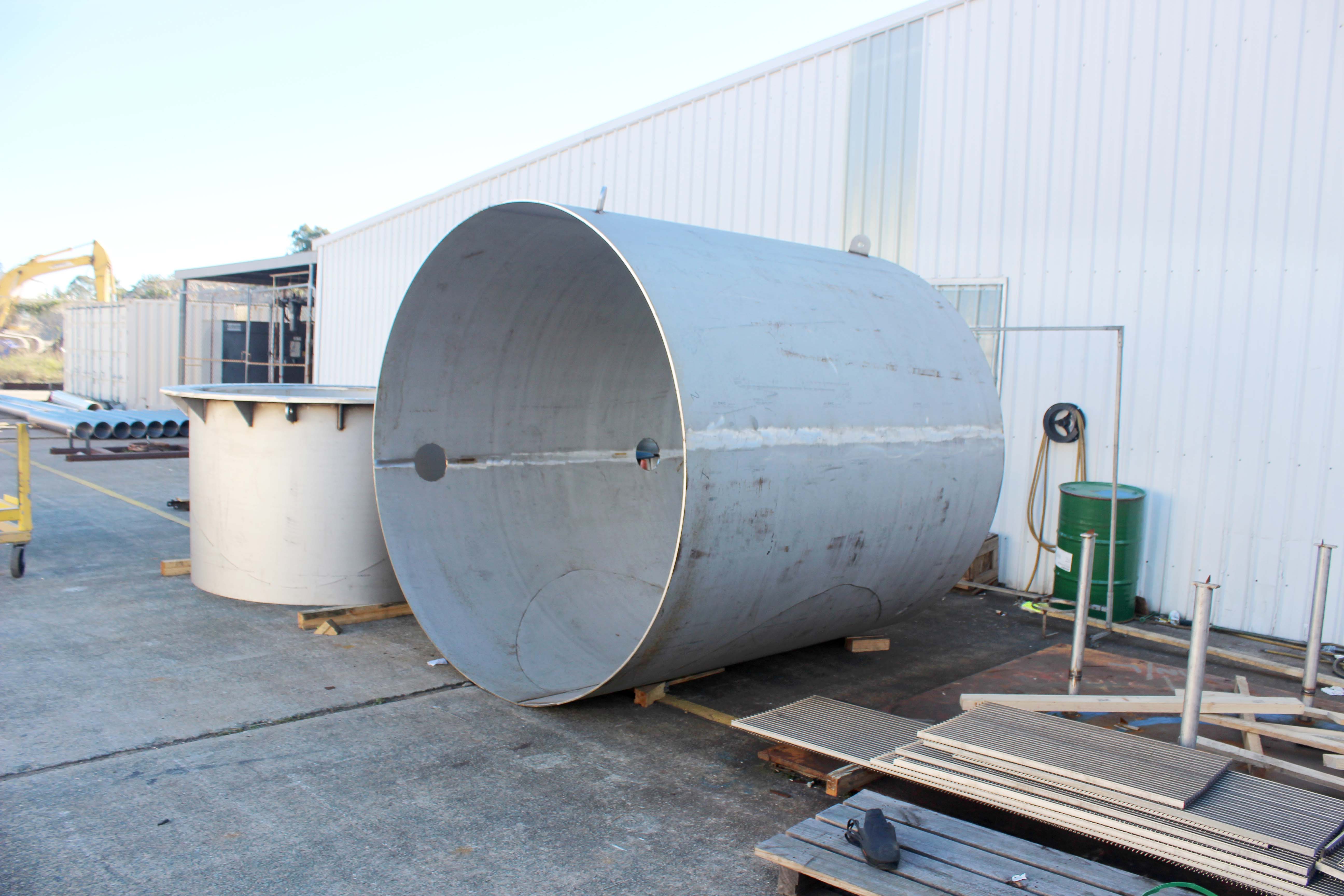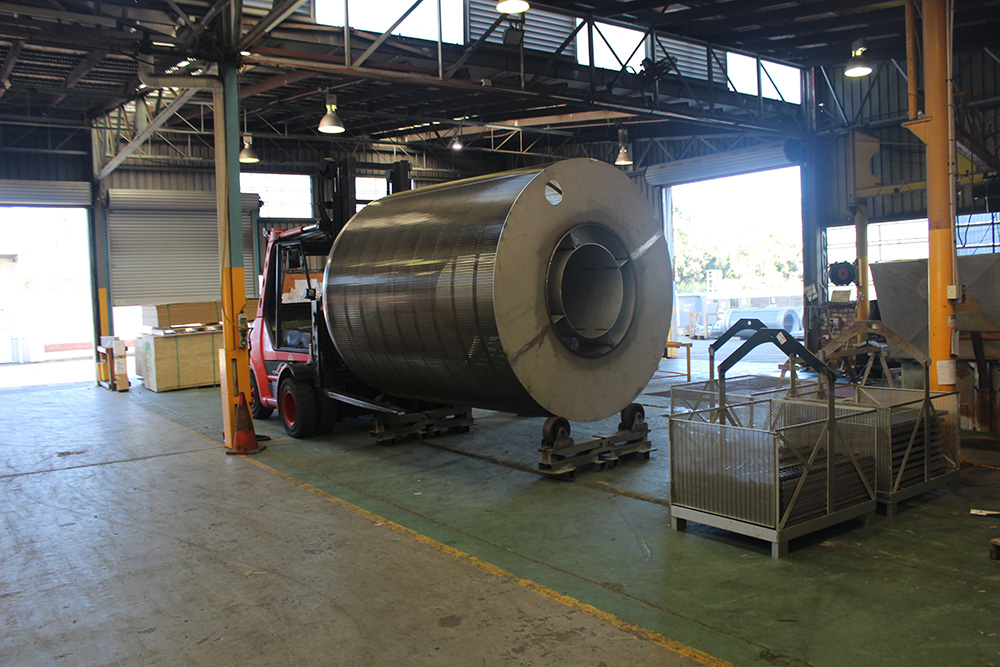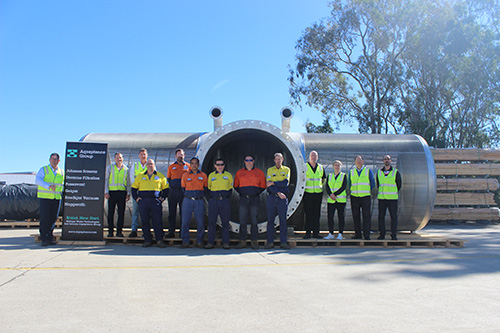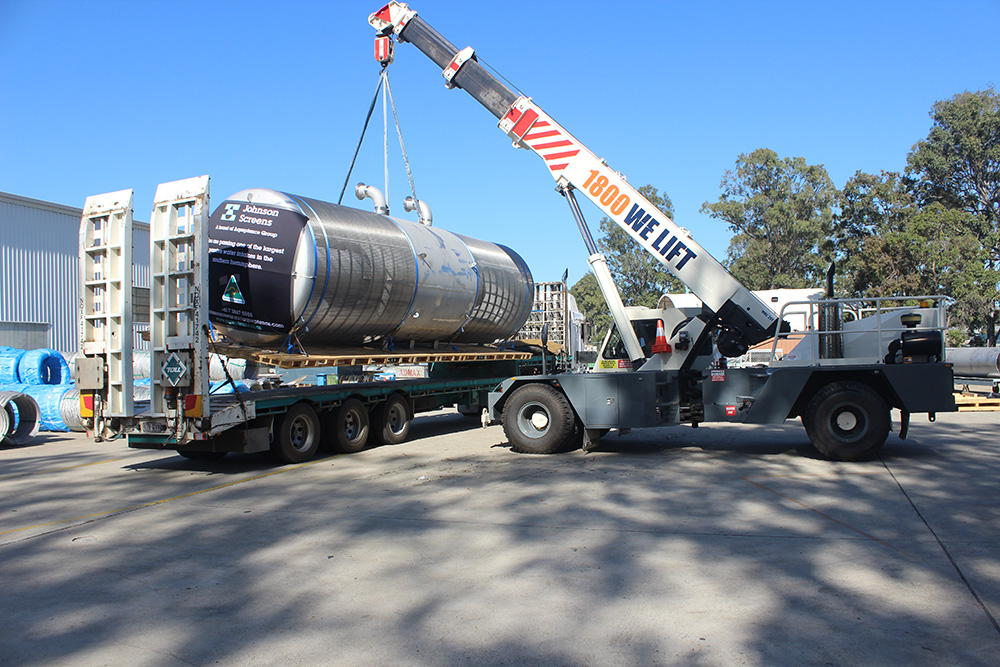
Stainless steel is playing a vital role in delivering effective bulk water intake screens for Melbourne’s water supply.
Designed and manufactured in Brisbane, ASSDA Member Aqseptence Group Australia has recently delivered one of the largest passive intake screens in the Southern Hemisphere. Having produced more than 4,000 screens for the last 50 years, this latest milestone achieved a nomination in the hotly contested Process Industries category of the 2019 ASSDA Fabricator Project of the Year Award.
In mid-August 2019, Aqseptence Group was engaged by a joint venture of John Holland and KBR to provide design and construct services for a significant capital works project, covering multiple Melbourne Water assets. The screen is used as a bulk water transfer screen for the O’Shannassy Dam, located east of Melbourne. Distributing clean drinking water to most parts of Melbourne, it is a critical asset storing 3.1 gigalitres of water among a series of reservoirs on the city’s periphery. The mammoth screen took approximately two months to design and manufacture.
The Johnson Screens T96E passive intake measures an impressive 8.6 metres wide and stands 3.6 metres high. It is constructed entirely in grade 316L with a mill finished plate and No. 4 finish wedge-wire and bar. K-Tig welding was used to join 10mm plates to achieve overall plate size to roll into tubes. The entire fabrication was then pickled and passivated. Grade 316L, a standard material of construction at Aqseptence Group, was specified for the grade’s ability to resist general and localised forms of corrosion, a risk even with relatively low chloride inland water sources. Additionally, being easy to source and fabricate, its versatility in taking many forms and profiles is clearly on display.
The intake screen is used to provide an uninterrupted water withdrawal source while protecting assets from foreign matter and most importantly, protecting wildlife by guaranteeing uniform and low through-flow velocities. This fish-friendly screen is also a passive design as it has no moving parts, therefore simplifying maintenance and reliability. Aqseptence Group’s Vee-Wire slot system was used to ensure uniform flow through the screen at a controlled velocity, to protect surrounding marine life. Additionally, using the strength properties of 316L, the screen has sufficient mechanical rigidity to support its own weight along with hydrostatic pressures. Stainless steel was specified due to its low impact on the environment, on both the reservoir and the clean drinking water it supplies, paired with its durability, corrosion resistance and material strength attributes.
Aqseptence Group is now focused on working with the broader network of water infrastructure authorities to help upgrade their water supply assets and continue to service the City of Melbourne for future generations with the use of stainless steel.




This article is featured in Australian Stainless Magazine issue 70, 2020.